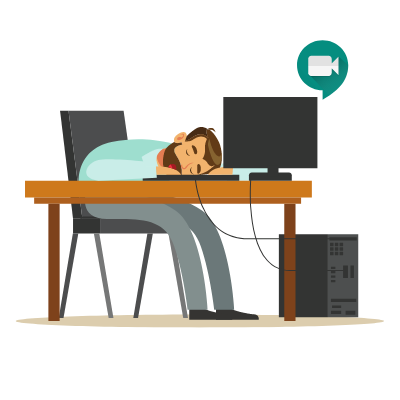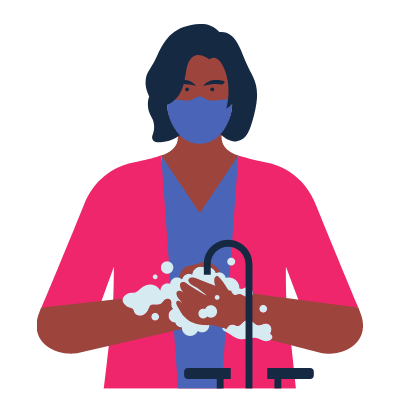COVID fatigue checklist – is it impacting your workplace?
 COVID fatigue is spreading across the nation as both workers and employers find themselves exhausted after months of precautions. While most businesses moved quickly to take cautionary measures in the spring, some of those measures may have loosened as time went on. This was especially true during the summer months when cases were low. However, with cases rising drastically and many businesses unable or unwilling to return to a full shut down, it’s more important than ever to stay vigilant on COVID safety. After all, a positive COVID case at your business will be far more disruptive in the long run than stringent safety precautions.
COVID fatigue is spreading across the nation as both workers and employers find themselves exhausted after months of precautions. While most businesses moved quickly to take cautionary measures in the spring, some of those measures may have loosened as time went on. This was especially true during the summer months when cases were low. However, with cases rising drastically and many businesses unable or unwilling to return to a full shut down, it’s more important than ever to stay vigilant on COVID safety. After all, a positive COVID case at your business will be far more disruptive in the long run than stringent safety precautions.
If your workplace may be suffering from COVID fatigue – there’s hope on the way. With the first COVID vaccines already deployed, an end is in sight. This checklist will help you determine if it’s time to increase your safety measures or better enforce those you already have in place.
Reduce the number of workers present and reduce exposure
- Allow all employees capable of working remotely to do so. Even if an employee must come into the office some days, having them work remotely other days still reduces the risk of exposure.
- Encourage employees to stay home when sick and support them when they need to. Sick employees should remain at home, especially if they have COVID symptoms. However, this may require providing additional sick leave for employees or being more flexible with scheduling.
- Require employees to remain home if they may have been exposed. Employees with a known exposure, or living in a household with someone exposed or positive should remain home as well. Ask these employees to quarantine and be tested before returning to work.
- Hold meetings virtually or by phone. While remote meetings may come with their own challenges, they significantly reduce risk. Most meetings likely do not need to be in person — even if that means sending materials to someone’s home for them to review. Look for a link on how to make remote meetings better.
Additional Resource: Learn more about managing employees remotely.
If your business requires a large in-person workforce
- Consider staggering employee shifts. You may want to increase the number of shifts – day, afternoon, evening, etc… You’ll be able to spread your workforce out more and reducing the number of employees present at any given time.
- Try grouping employees in pods. Have the same employees work together each day, especially if it’s difficult to ensure proper social distancing. This will reduce the risk that a COVID positive employee would expose a large percent of your workforce. Instead, it would be contained to just the handful of employees they’re grouped with.
- Encourage employees not to travel, and have a plan if they do. Travel, especially to areas with high numbers of COVID cases, can increase risk. With this in mind, some businesses have required employees who travel to quarantine at home for 14 days before returning to a shared work location. You may also request a negative COVID test before employees return.
- If you must have an in-person meeting, take proper safety precautions. If something necessitates an in-person meeting be sure to do it as safely as possible. Ensure everyone in the meeting is at least 6 feet apart and wears masks the entire time. Improve ventilation by opening windows and doors and using air purification systems where possible. Finally, try to avoid touching shared surfaces and passing around documents/other items that could spread the virus.
Additional measures to consider if employees can’t distance
- Upgrade your ventilation system. While upgrading ventilation may not be plausible for all businesses, consider opening doors and windows to improve airflow. In addition, localized air purification systems can be used in rooms with employees. However, these should not be used in place of masks and not all filtration systems are effective against COVID-19.
- Have employees face away from one another. Employees who must work in close proximity should be turned away from one another as much as possible. This reduces the chance of viral particles from a cough or sneeze reaching a coworker.
- Implement physical barriers between employees. High cubicle walls or plexiglass barriers can help reduce spread between employees who must be in close proximity.
 Employee safety in any business
Employee safety in any business
- Ensure employees consistently wear masks when near others and in shared spaces. Unless in a private room with a closed door like a personal office, employees should keep masks on. In addition, masks should be washed and dried daily. Finally, employees should wear masks properly — that means covering both their mouth and nose, and not pulling them down to talk.
- Set up break areas to ensure proper distancing. Employees cannot wear masks when eating, but break areas should be set up so employees can maintain at least 6 feet of distance. If this is difficult to do, consider staggering employee breaks or creating additional spaces for employees to eat and take breaks.
- Check the temperature of employees before work. Temperature checks aren’t perfect — many people with COVID never develop a fever. However, a fever is a sure sign that an employee is sick with something and could be contagious. These employees should remain home until better. If you do temperature checks, try to use touch-free technology, or be certain to sanitize materials in between use.
- Ask employees to perform health screenings. Similar to temperature checks, employees may be asymptomatic or have very mild symptoms. Still, health screenings can help reduce some additional risk. Each day ask employees to screen for COVID symptoms before work. If they exhibit any symptoms like a new cough, sore throat, muscle aches, loss of taste/smell, or others have employees stay home until they can be tested.
- Sanitize shared surfaces frequently. Things like doorknobs, telephones, and payment terminals should be cleaned frequently — especially if customers are in and out of your business.
- Provide adequate sanitization supplies. Employees should be washing their hands frequently. In fact, the CDC recommends employees wash their hands before and after shifts; before and after breaks; after touching objects handled by other customers and employees; and before and after preparing food. Be certain that you have soap and paper towels stocked up. If that’s not always an option, create stations where employees (and customers) can sanitize their hands with an at least 60% alcohol-based sanitizer.
Additional Resource: See some additional recommendations on safety measures that should be taken as employees return to work.
Additional considerations for businesses with customers/clients/patients
- Require customers to wear masks when inside.
- Limit the number of customers inside to ensure distancing can be maintained.
- Offer curbside pickup and online ordering when possible.
- Install plexiglass barriers to protect cashiers from transmission.
- Place distancing markings within your business to help customers maintain distance.
- If you have a waiting area set up to maintain distancing between customers or patients.
- If possible, consider having customers or patients wait in their vehicle until you’re ready for them to enter.
- Ensure front-of-house workers and cashiers have frequent opportunities to take breaks and wash their hands.
- Sanitize things between customers like payment terminals, pens/clipboards, and other surfaces they may touch.
Additional Resource: See what the CDC recommends for workplace safety precautions.








